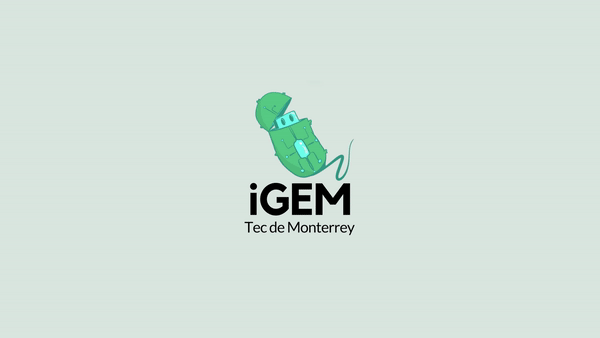| Line 87: | Line 87: | ||
</style> | </style> | ||
</head> | </head> | ||
| + | |||
<body> | <body> | ||
| + | |||
| + | <!-- Header --> | ||
<header class="masthead" id="page-top"> | <header class="masthead" id="page-top"> | ||
| − | + | <div class="header-top" style="background: #397471;"> | |
| − | <div | + | </div> |
| − | <div | + | <div class="header-bottom"> |
| − | <div class=" | + | <div class="header-background"> |
| − | + | <div class="header-background-right" style="margin-left: -10px; margin-right: 1%;"> | |
| − | </div> | + | <img class="trail" src="https://static.igem.org/mediawiki/2018/5/51/T--Tec-Monterrey--Header_Trail_Far_Right.svg"> |
| − | <div class=" | + | </div> |
| − | + | <div class="header-background-center-right" style="margin-right: -5%; margin-left: -10px;"> | |
| − | </div> | + | <img class="trail" src="https://static.igem.org/mediawiki/2018/7/72/T--Tec-Monterrey--Header_Trail_Center_Right.svg"> |
| − | </div> | + | </div> |
| + | <div class="header-background-center" style="margin-left: -10px; margin-right: -10px;"> | ||
| + | <img class="trail" src="https://static.igem.org/mediawiki/2018/7/7c/T--Tec-Monterrey--Header_Trail_Center_2.svg"> | ||
| + | </div> | ||
| + | <div class="header-background-left" style="margin-right: -10px;"> | ||
| + | <img class="trail" src="https://static.igem.org/mediawiki/2018/a/a6/T--Tec-Monterrey--Header_Trail_Left.svg"> | ||
| + | </div> | ||
| + | </div> | ||
| + | <div class="div-header-bottom"> | ||
| + | <br> | ||
| + | <br> | ||
| + | <br> | ||
| + | <div class="header-title"> | ||
| + | Mathematical Model | ||
| + | </div> | ||
| + | <div class="header-subtitle"> | ||
| + | E.coding description | ||
| + | </div> | ||
| + | </div> | ||
</div> | </div> | ||
| − | |||
</header> | </header> | ||
<div class="articulo"> | <div class="articulo"> | ||
| − | <section id="overview | + | <section id="overview" class="seccion-responsiva"> |
| − | + | <div class="contenido"> | |
| − | + | <div class="body-title">E.Coding description</div> | |
| − | + | <div class="body-subtitle">Introduction</div> | |
| − | + | The description of our system had a progressive development parallel to the realization of the whole project. Initially, a simple system of linear coupled differential equations was proposed to describe the whole system, but as the understanding of all the aspects the system involves improved, the model was continuously refined to encompass a more suitable description that became both accurate and practical. | |
| − | + | ||
| − | + | <div class="body-subtitle">Differential Equations System derivation</div> | |
| − | + | ||
| − | + | ||
| − | + | ||
| − | + | ||
| − | + | ||
| − | + | ||
| − | + | ||
| − | + | ||
| − | + | ||
| − | + | ||
| − | + | ||
| − | + | ||
| − | + | ||
| − | + | ||
| − | + | ||
| − | + | ||
| − | + | ||
| − | + | ||
| − | + | ||
| − | + | ||
| − | + | ||
| − | + | ||
| − | + | ||
| − | + | ||
| − | + | ||
| − | + | ||
| − | + | ||
| − | + | ||
| − | + | ||
| − | + | ||
| − | + | ||
| − | + | ||
| − | + | ||
| − | + | </div> | |
| − | </section> | + | </section> |
| + | </div> | ||
Revision as of 06:48, 17 October 2018





Mathematical Model
E.coding description
E.Coding description
Introduction
The description of our system had a progressive development parallel to the realization of the whole project. Initially, a simple system of linear coupled differential equations was proposed to describe the whole system, but as the understanding of all the aspects the system involves improved, the model was continuously refined to encompass a more suitable description that became both accurate and practical.
Differential Equations System derivation


